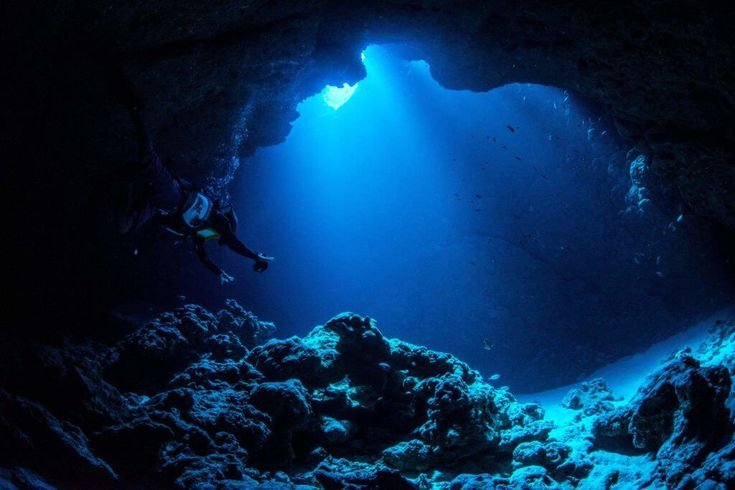Introduction: The Unknown World Beneath
More than 80% of our oceans remain unexplored and unmapped. As vast as the seas stretch, so too do the mysteries they hold. Despite modern advances in marine biology and underwater exploration, scientists are only scratching the surface of understanding life in the deep. “Mysteries of the Deep: Scientists Discover New Marine Species” is not just a headline—it’s a glimpse into a hidden world teeming with creatures unlike anything known on land.
Each deep-sea expedition yields surprising results. From translucent octopuses to alien-like jellyfish, new marine species are being discovered regularly, reshaping our understanding of evolution, survival, and biodiversity on Earth.
The Significance of New Species Discovery
Discovering new marine species isn’t just about curiosity—it plays a critical role in science, medicine, and climate understanding. Every organism found in the deep ocean may hold keys to evolutionary history, biological innovations, and even medical breakthroughs.
Moreover, each new species discovered adds a vital puzzle piece to our understanding of ocean ecosystems. Knowing what lives in the sea helps scientists monitor environmental changes, preserve marine biodiversity, and design conservation strategies.
The Deep Sea: Earth’s Final Frontier
The deep ocean begins roughly 200 meters below the surface and stretches down to depths of over 11,000 meters in areas like the Mariana Trench. It is a world without sunlight, immense pressure, and near-freezing temperatures. Yet life not only exists there—it thrives.
These extreme conditions have given rise to unique adaptations in marine life. Bioluminescence, antifreeze-like proteins, and ultra-sensitive sensory systems are just a few survival traits scientists have observed in new species. These adaptations showcase evolution’s brilliance and hint at how life might exist on other planets.
Recent Breakthroughs: Incredible New Marine Species
Over the past decade, numerous research missions have stunned the scientific community with discoveries of never-before-seen creatures. In 2023, a deep-sea expedition off the coast of Chile discovered over 100 new species, including sea sponges, starfish, and a ghostly translucent octopus. In the Indian Ocean, a “Dumbo” octopus with ear-like fins and mesmerizing movement was recorded for the first time.
Another incredible find was the “gummy squirrel,” a bizarre sea cucumber found in the Gulf of Mexico. With a gelatinous body and long tail, it seems like something straight from a science fiction novel. Each discovery underlines that we still know so little about what lies beneath.
Technology Behind the Discoveries
These groundbreaking discoveries are possible thanks to incredible advancements in deep-sea exploration technology. Remotely Operated Vehicles (ROVs), Autonomous Underwater Vehicles (AUVs), and deep-diving submersibles allow scientists to access parts of the ocean that were previously unreachable.
High-resolution cameras, robotic arms for sample collection, and sensors that measure temperature, pressure, and salinity have revolutionized how we explore the ocean. With AI-assisted pattern recognition, researchers can now identify new species from images and data collected at extreme depths, speeding up the pace of discovery.
Life in the Twilight Zone
Between 200 to 1000 meters below the surface lies the mesopelagic zone—often called the twilight zone. Sunlight fades, and temperatures drop drastically, but this layer of the ocean is full of surprises.
Recent studies have revealed an abundance of unknown species in the twilight zone, many of them bioluminescent. Scientists believe that these mid-water creatures could outnumber all fish species known today. The twilight zone plays a major role in the ocean’s carbon cycle, making its inhabitants crucial to Earth’s climate stability.
Bioluminescence: Nature’s Neon Signature
One of the most fascinating traits observed in deep-sea species is bioluminescence—the ability to produce light. Creatures like lanternfish, vampire squid, and glowing jellyfish use light for defense, hunting, and communication.
In 2024, marine biologists discovered a new species of siphonophore in the Pacific Ocean that glows in intricate, pulsing patterns never recorded before. These glowing organisms are not only mesmerizing but also offer clues into chemical processes that could benefit biomedical and technological research.
Hydrothermal Vents: Oasis in the Abyss
Another hotbed of new species discovery lies around hydrothermal vents—cracks on the ocean floor that emit superheated, mineral-rich water. These extreme environments host ecosystems fueled not by sunlight, but by chemosynthesis.
Species like the giant tube worm, eyeless shrimp, and snail-like mollusks with iron armor thrive in these areas. In recent years, researchers found several new worm species and bacterial colonies that could withstand toxic gases and high temperatures—an astounding testament to life’s adaptability.
Challenges of Classifying New Marine Life
Identifying and classifying new species is a meticulous and time-consuming process. It requires detailed morphological analysis, genetic sequencing, and sometimes years of peer-reviewed studies. Many deep-sea species are extremely fragile and difficult to preserve for laboratory study.
Moreover, many of the discoveries remain undescribed due to a shortage of taxonomists specializing in marine invertebrates. For every species discovered, many more are likely collected but remain unnamed in research archives, waiting for proper classification.
Climate Change and Habitat Threats
While scientists are uncovering new marine species, many existing ones face extinction. Climate change, ocean acidification, plastic pollution, and deep-sea mining are rapidly altering marine environments.
Some species may disappear before we even know they exist. Protecting deep-sea ecosystems is essential—not just for biodiversity, but for the health of the planet. As we explore the mysteries of the deep, we must balance discovery with responsibility.
The Role of Citizen Science
With the rise of accessible technology, citizen science is playing an increasing role in marine exploration. Divers, fishermen, and amateur marine enthusiasts are now contributing valuable data and footage, some of which have led to new discoveries.
Initiatives like the Ocean Observers Network and online platforms for marine image sharing help researchers crowdsource sightings and validate field data. Every ocean lover has the potential to contribute to our growing understanding of marine biodiversity.
Potential for Medicine and Innovation
Many new marine species contain unique biochemicals that could lead to groundbreaking medical treatments. Marine organisms have already contributed to the development of cancer drugs, antibiotics, and anti-inflammatory agents.
A sponge discovered in the Caribbean has been found to produce compounds with powerful antiviral properties. As we delve deeper into uncharted waters, the potential for biotechnological innovation from marine species is vast and largely untapped.
Ocean Exploration Missions to Watch
Organizations like NOAA, Schmidt Ocean Institute, and OceanX continue to fund and launch exploration missions aimed at discovering life in the deepest trenches and unstudied basins.
Missions like Ocean Census, which launched in 2023, aim to catalog 100,000 new marine species within a decade. With global cooperation and public interest growing, we may be entering a golden age of deep-sea discovery.
Why These Discoveries Matter
Every new species we find reminds us of how little we know about our own planet. These discoveries fuel wonder, drive innovation, and deepen our respect for life in all its forms. From preserving biodiversity to inspiring future generations of scientists, “Mysteries of the Deep: Scientists Discover New Marine Species” is more than just a scientific headline—it’s a call to explore, protect, and cherish the natural world.
Conclusion: Embracing the Unknown
The ocean remains one of the last great frontiers of exploration. Each dive into the abyss opens new chapters in Earth’s story—chapters filled with strange, glowing, alien-like creatures that defy what we thought was possible.
As we continue to explore these mysterious depths, we must also work to safeguard them. For in those dark waters lie not only undiscovered species but also the secrets of life, resilience, and the very future of our planet.


